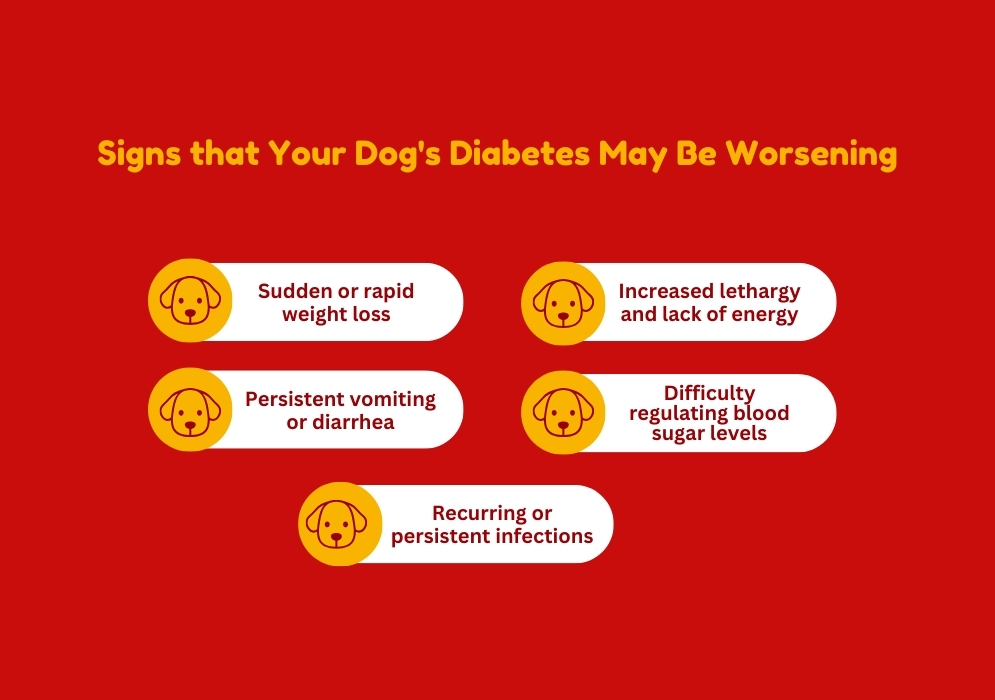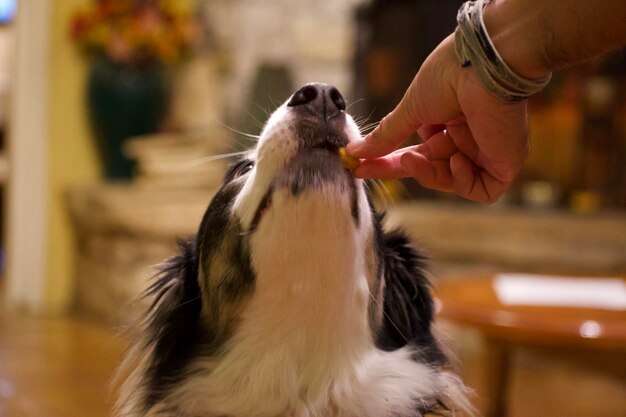What Are The Signs Your Dog With Diabetes Is Dying: They Might Be Nearing the End


To us, our furry friends are more than just animals; they’re family. When your dog has diabetes, managing their health can be a challenging journey filled with ups and downs. But what happens when you start noticing signs that your beloved companion might be nearing the end of their life?
It’s a heart-wrenching thought, but understanding these signs can help you provide the best care and comfort during their final days. In this article, we’ll explore the signs your dog with diabetes is dying so you can be prepared and make informed decisions during this difficult time.
Diabetes in Dogs

Diabetes mellitus is a chronic condition that affects dogs, just like it does in humans. It occurs when the body cannot properly regulate blood sugar levels due to a lack of insulin production or the body’s inability to effectively use the insulin produced. This can lead to a variety of health complications if left untreated.
While diabetes is a serious condition, it is also manageable with proper care and treatment. However, as your dog’s diabetes progresses, it’s important to be aware of the signs that indicate their condition may be worsening and that they may be nearing the end of their life.
Common Signs and Symptoms of Diabetes in Dogs

The most common signs of diabetes in dogs include:
- Increased thirst and urination
- Increased appetite
- Weight loss
- Lethargy
- Cloudy eyes or cataracts
- Recurring or persistent infections
Suppose your dog is exhibiting any of these symptoms. In that case, it’s important to consult with your veterinarian as soon as possible to determine if they have diabetes and to begin appropriate treatment.
Managing Diabetes in Dogs
Managing diabetes in dogs typically involves a combination of insulin injections, dietary changes, and regular monitoring of blood sugar levels. Your veterinarian will work with you to develop a personalized treatment plan that considers your dog’s needs and health status.
It’s important to be diligent in administering insulin injections and monitoring your dog’s blood sugar levels to ensure their diabetes is well-controlled. Regular check-ups with your veterinarian are also crucial to ensure that your dog’s diabetes is being effectively managed.
Signs that Your Dog’s Diabetes May Be Worsening

As your dog’s diabetes progresses, several signs may indicate their condition is worsening and that they are nearing the end of their life. These signs include:
Sudden or Rapid Weight Loss
If your dog is losing weight rapidly despite maintaining their appetite, it may be a sign that their diabetes is not being well-controlled.
Increased Lethargy and Lack of Energy
As your dog’s diabetes worsens, they may become increasingly lethargic and have difficulty maintaining their normal energy levels.
Persistent Vomiting or Diarrhea
These gastrointestinal symptoms can be a sign of diabetic complications, such as diabetic ketoacidosis, which is a life-threatening condition.
Difficulty Regulating Blood Sugar Levels
If your dog’s blood sugar levels become increasingly difficult to manage, even with adjustments to their insulin dosage and diet, it may be a sign that their condition is worsening.
Recurring or Persistent Infections
Diabetes can weaken the immune system, making your dog more susceptible to infections. If your dog is experiencing frequent or persistent infections, it may be a sign that their diabetes is not being well-managed.
If you notice any of these signs in your dog, it’s important to consult with your veterinarian as soon as possible to determine the best course of action.
Recognizing End-Stage Symptoms in Dogs with Diabetes
As a dog’s diabetes progresses to the end stage, several additional symptoms may become more pronounced. These include:
- Severe dehydration and increased thirst
- Extreme lethargy and weakness
- Difficulty breathing or labored breathing
- Seizures or loss of consciousness
- Lack of appetite and refusal to eat
- Rapid or irregular heartbeat
- Increased body temperature
If your dog is exhibiting any of these end-stage symptoms, working closely with your veterinarian is crucial to ensure your dog’s comfort and well-being during this difficult time.
Caring for a Dog Nearing the End of Life

When a dog with diabetes is nearing the end of their life, it’s important to provide them with the best possible care and comfort. This may include:
- Ensuring they have a quiet, comfortable, and safe environment
- Providing them with small, frequent meals or liquid nutrition if they are unable to eat solid food
- Administering pain medication or other palliative care as recommended by your veterinarian
- Offering gentle affection and companionship to help ease their suffering
It’s also important to work closely with your veterinarian to determine the appropriate time to consider end-of-life decisions, such as euthanasia, to ensure your dog’s suffering is minimized.
When To Say Goodbye?
Deciding when to say goodbye to a beloved pet is never an easy decision, but it’s important to prioritize your dog’s quality of life and comfort. When a dog with diabetes is nearing the end of their life, you may need to consider the following factors in making this difficult decision:
- Your dog’s overall quality of life, including their ability to engage in normal behaviors and activities
- The frequency and severity of their symptoms, such as pain, discomfort, or distress
- The effectiveness of their current treatment plan and the likelihood of further deterioration
- Your ability to provide the level of care and support your dog requires during this time
Ultimately, the decision to euthanize a dog with diabetes should be made in consultation with your veterinarian, who can provide guidance and support during this challenging time.
Coping with the Loss of a Beloved Pet

Losing a beloved pet is always a difficult and emotional experience. When a dog with diabetes passes away, it’s important to allow yourself time to grieve and process your feelings. Some strategies that may help include:
- Sharing your memories and stories with friends and family who understand the bond you shared with your pet
- Creating a memorial or tribute to honor your dog’s life, such as a photo album, a piece of artwork, or a donation to a pet-related charity
- Seeking support from a pet loss support group or a mental health professional if you are struggling with the grief
- Allowing yourself to feel the full range of emotions, from sadness to anger to gratitude, as you navigate the grieving process
Remember, there is no right or wrong way to grieve the loss of a beloved pet. Be patient with yourself and allow yourself the time and space you need to heal.
If you’re concerned that your dog with diabetes may be nearing the end, don’t hesitate to reach out to your veterinarian. They can provide the guidance and support you need to ensure your dog’s comfort and well-being during this challenging time. Together, you can make the best decisions for your beloved furry friend.








Leave A Comment